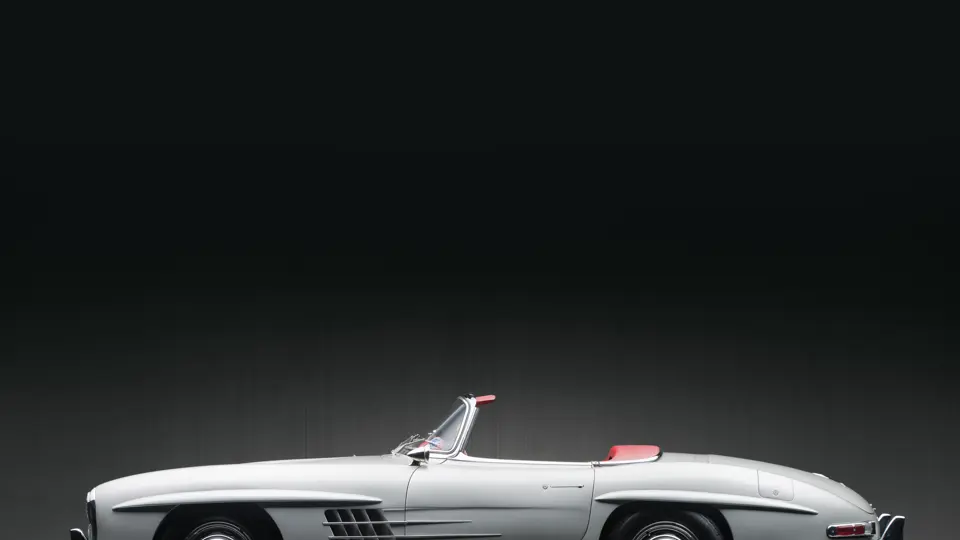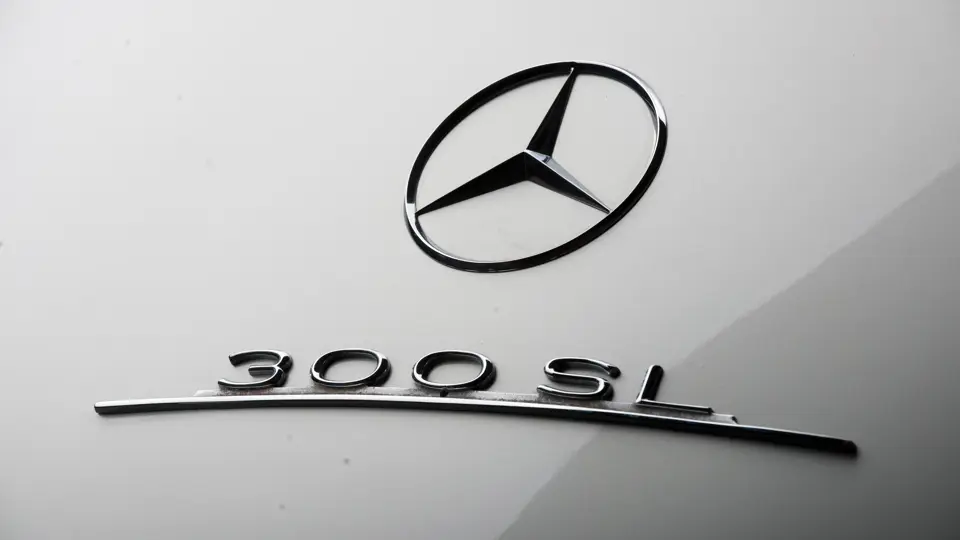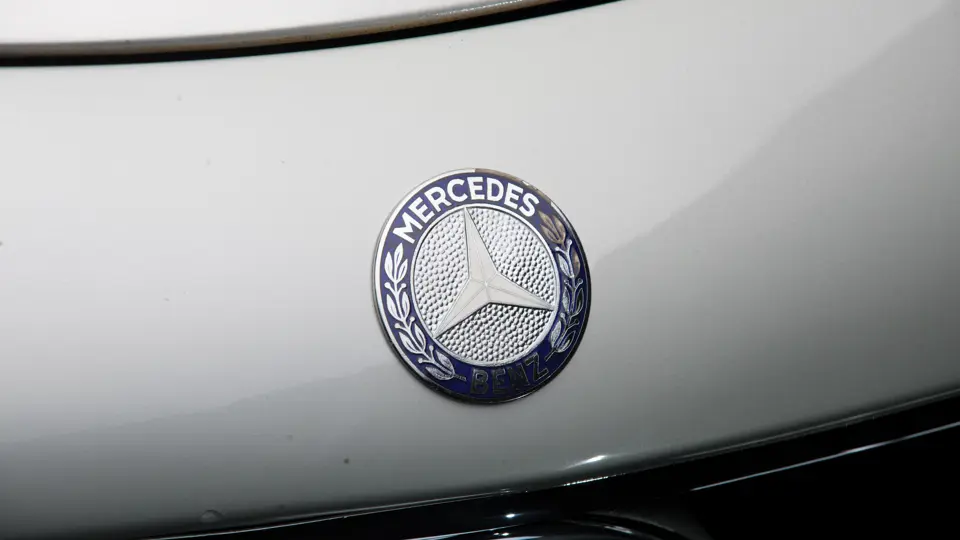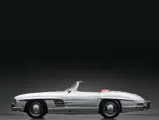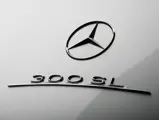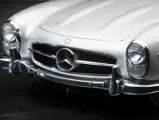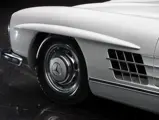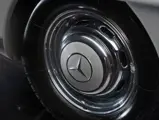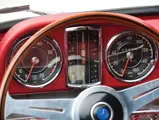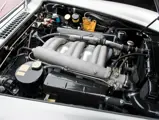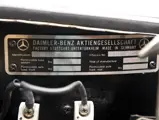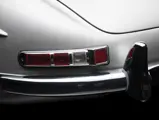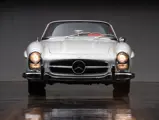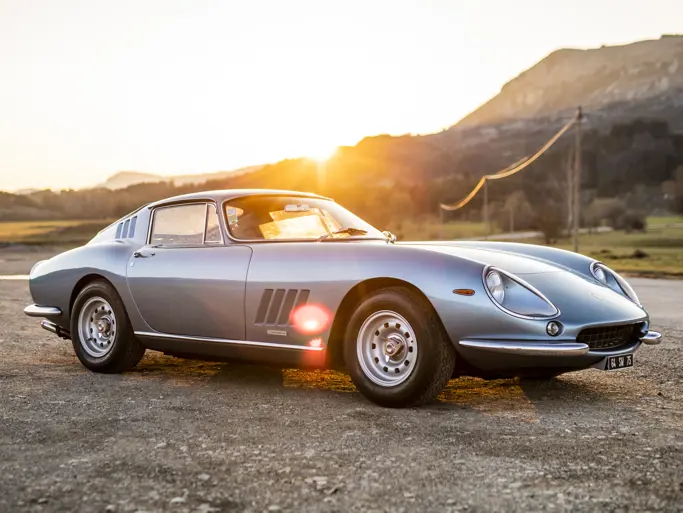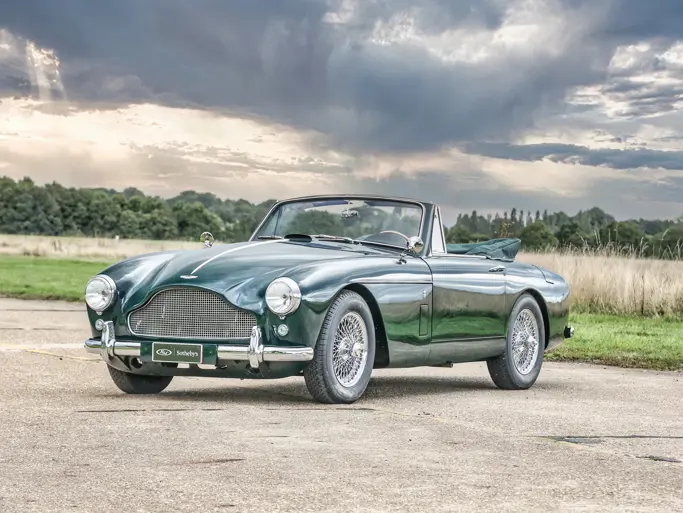215 bhp (DIN), 240 bhp (SAE), 2,996 cc OHC inline six-cylinder engine, four-speed all-synchromesh manual gearbox, independent front suspension with twin wishbones, coil springs and anti-roll bar, single-pivot swing axle rear suspension with compensating spring and coil springs, hydraulic telescopic shock absorbers, and hydraulic, servo-assisted brakes. Wheelbase: 94.5 in.
The spectacular Mercedes-Benz 300SL “Gullwing” was in production for just three years, during which time only 1,400 cars, not including racers and prototypes, were built largely by hand in Stuttgart’s finest tradition. Yet despite the low production volume, Daimler-Benz remained sufficiently convinced of the value of an expensive, image-leading sports car as part of its model lineup to develop an improved open version, resolving the well-documented ventilation issue associated with the Gullwing.
A modified 300SL Roadster chassis was first spotted in the summer of 1956 at Stuttgart, by the German magazine Auto, Motor und Sport. The improved 300SL Roadster debuted in the spring of 1957 at the Geneva Motor Show. By the end of that year, the final 70 of the 1,400 Gullwing Coupes and the first 618 of the 1,858 300SL Roadsters were assembled.
Among the Roadster’s many advancements was a lowered central section of the lightweight 300SL space-frame chassis to allow improved entrance and egress with smaller sills and enlarged doors. Strength was maintained, nonetheless, with the addition of diagonal struts bracing the lowered side sections to the rear tubular members. At the rear, the spare tire was repositioned below the trunk floor, necessitating a smaller fuel tank but maintaining reasonable luggage space.
The Roadster’s suspension was fine-tuned by the repositioning of the single-pivot rear swing-axle and the addition of a coil spring mounted transversely above the differential, linked to the two axle halves by a vertical strut, allowing the use of softer rear springs and providing a more comfortable ride and improved handling. Coupled with fatter tires and a wider track, the Roadster exhibited none of the prior Gullwing Coupe’s tricky handling characteristics. This specific feature was borrowed from the W196 Grand Prix racing car.
These revisions added some 250 pounds, the majority of which were associated with the convertible top and its mechanisms. The snug-fitting roof retracted fully into a well behind the seats and was covered with a hinged panel, making for a sleek, disappearing top body line. Regardless, the car remained an excellent performer with a factory-claimed 137-mph top speed.
According to The Roadster Registry, this car’s early owners were Stephen R. Johnson, Frank C. Beacham, and Per Soholm. There are no dates assigned to these three owners, so it is possible that this early ownership is complete. The car was owned by Ken Novarr, of Dallas, Texas, from approximately 1974–1989. During this period, the car was enjoyed by Novarr extensively, as indicated by the file that contains a copious number of service invoices. Interestingly, these invoices span the entire length of Novarr’s ownership, indicating that the car was serviced on a regular basis. It most recently spent some time with an owner in Massachusetts before joining the Davis Collection.
As presented today, this 300SL Roadster is finished in silver with red leather, red carpeting, and a red padded dash with a black cloth top. It is reported that the upholstery is original, which is believable, given that it has an evenly worn, inviting appearance. With 96,657 miles on the odometer, this car makes no excuses for its appearance. The older paint and brightwork present extremely well, and the engine bay, having been detailed in the past, remains presentable, but it proudly shows signs of the use it has experienced over the years. The 300SL Roaster is guaranteed to remain an icon for generations to come: when driven, this example will serve as an apt testament to the legend that was created in the crucible of racing at Le Mans, the Nurburgring, the Carrera Panamericana, and the Mille Miglia.

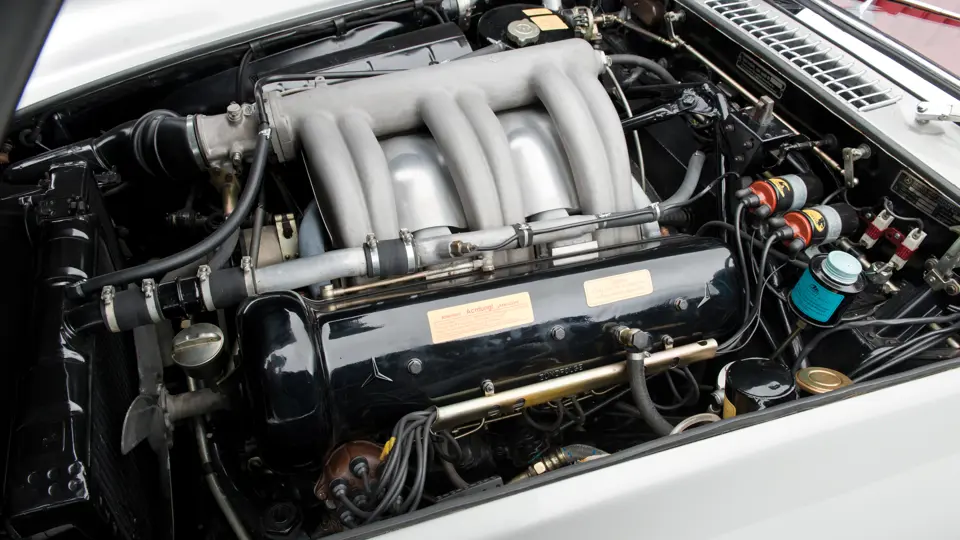


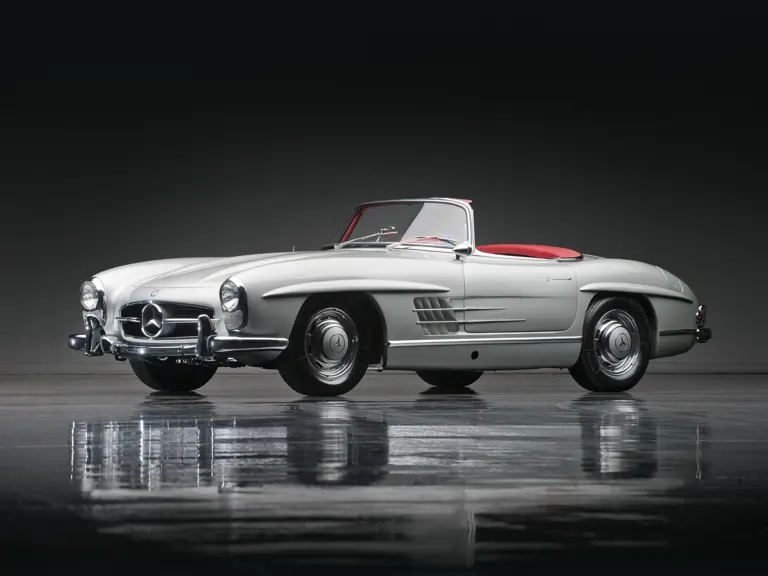
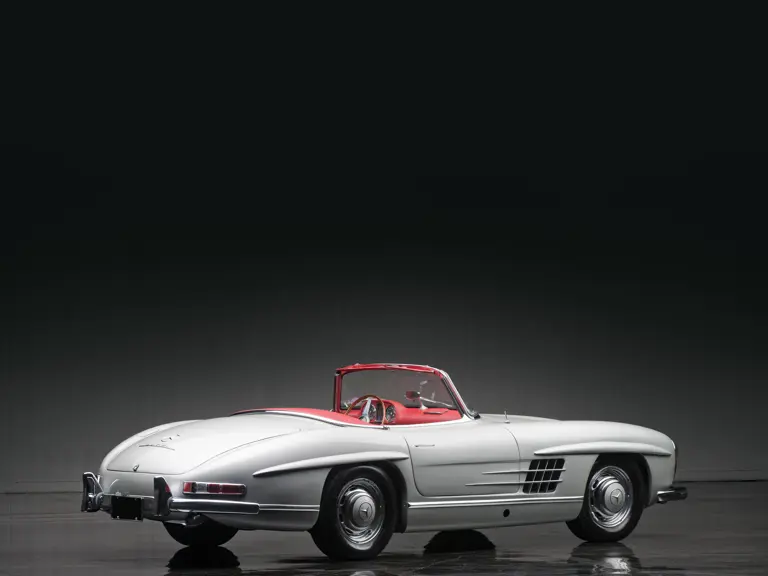


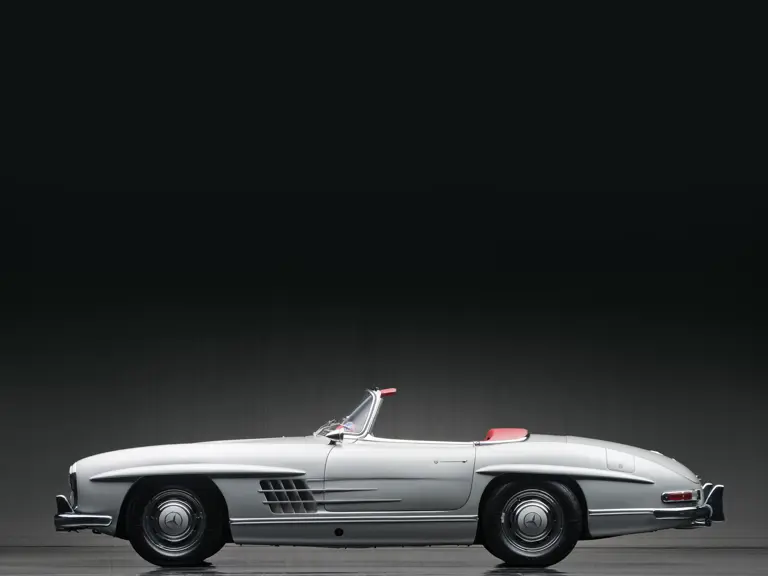
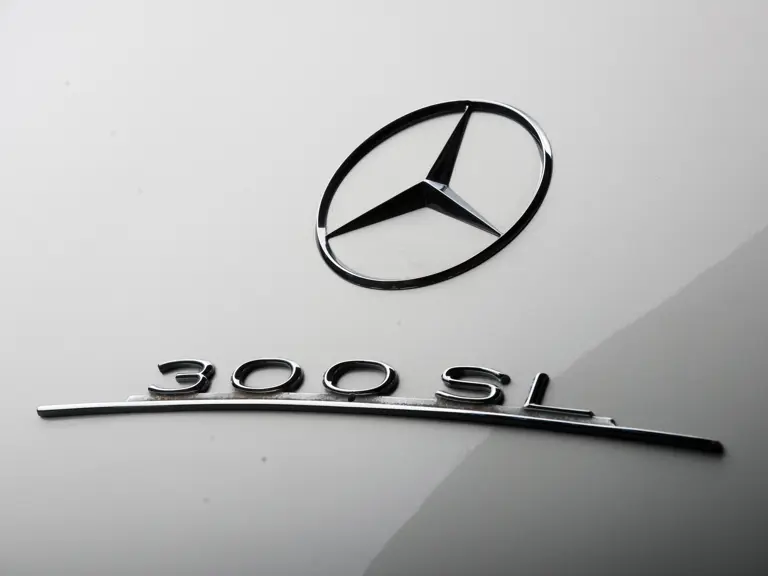
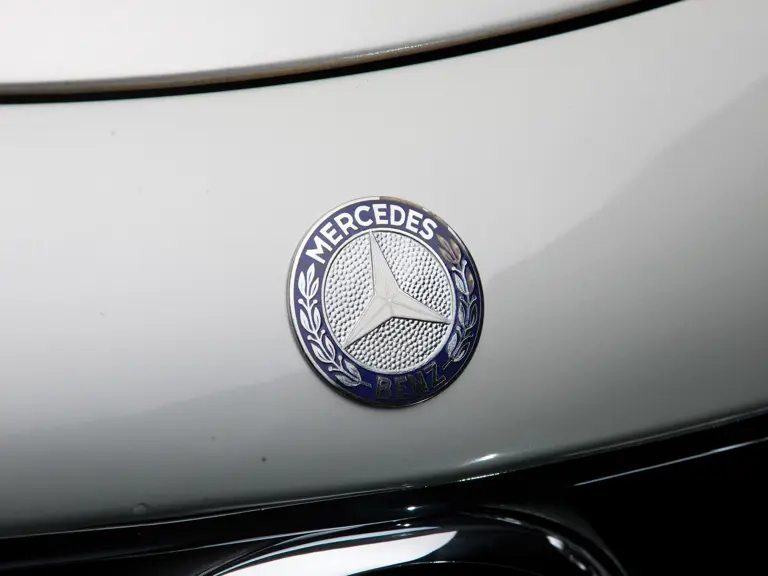
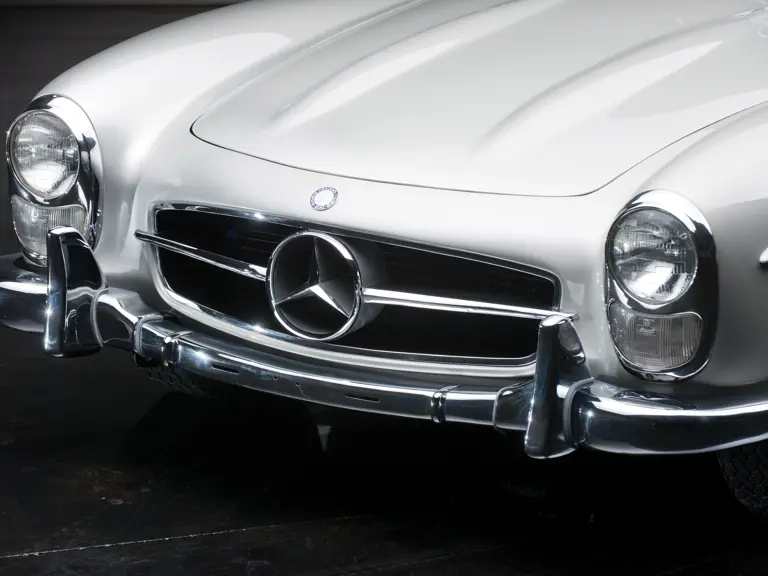
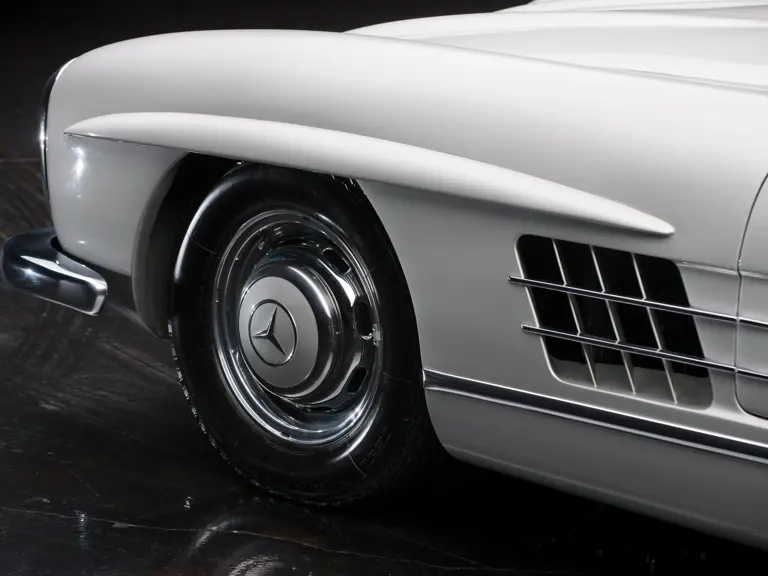

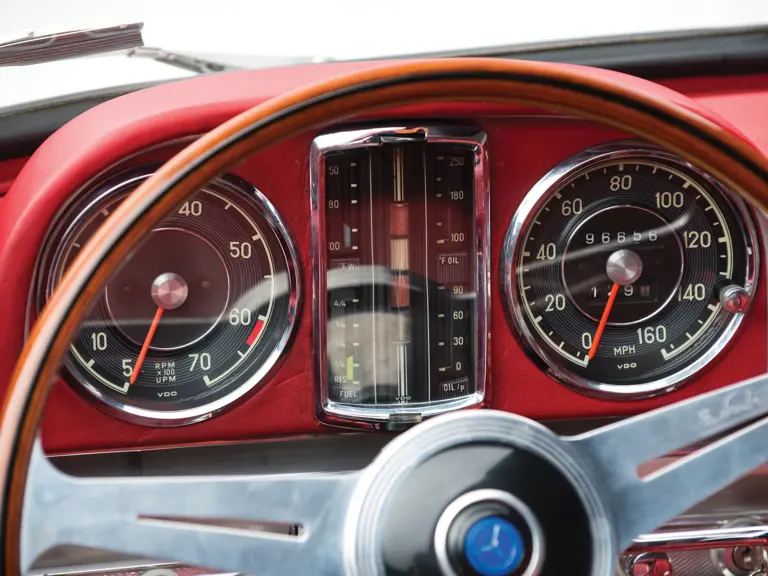

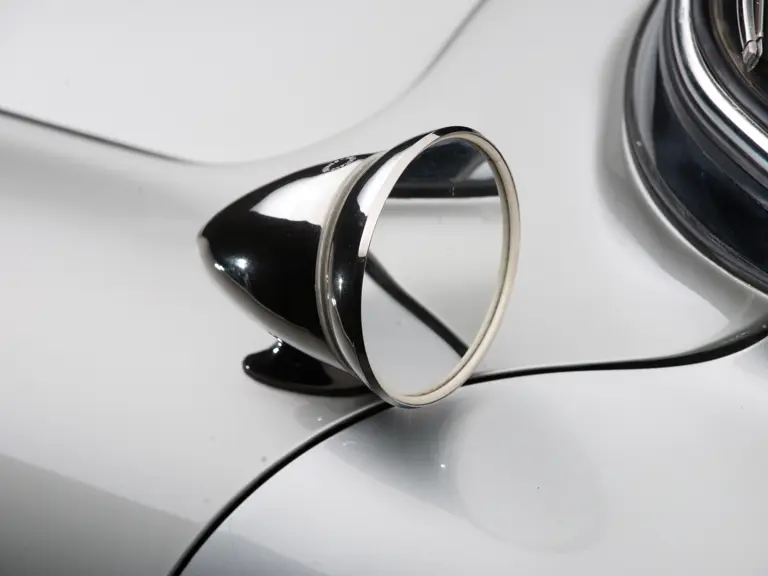
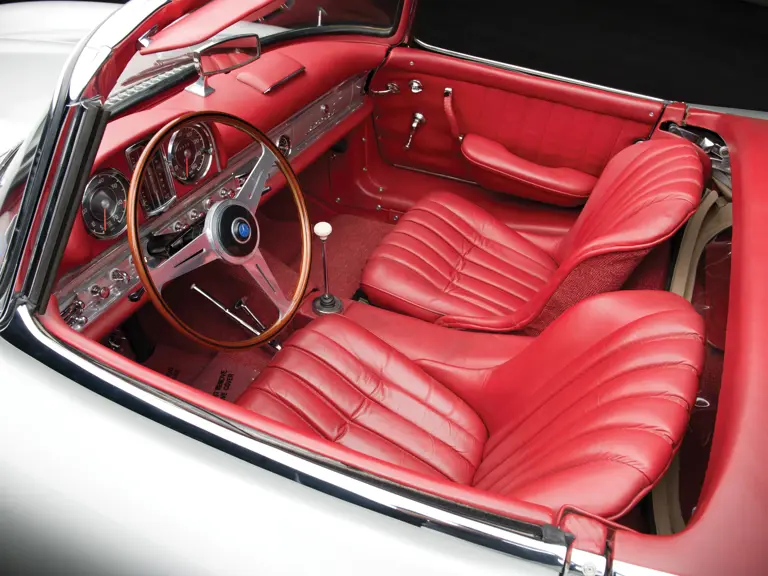
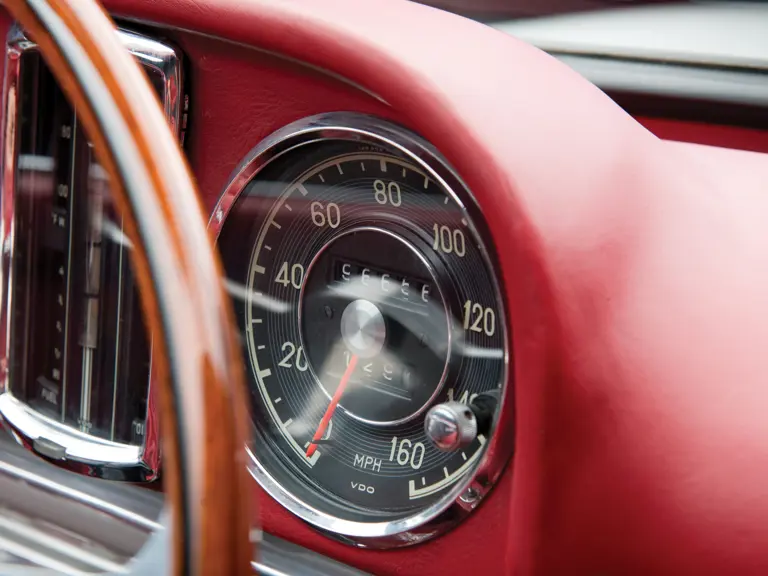
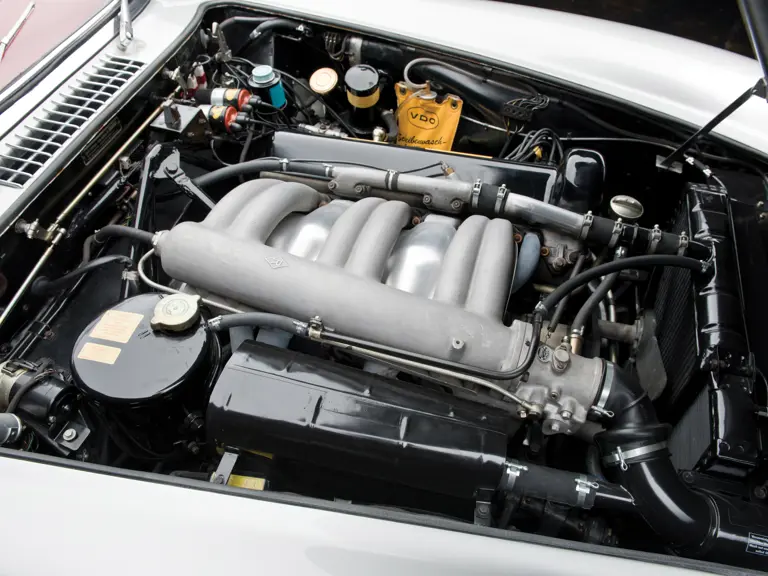



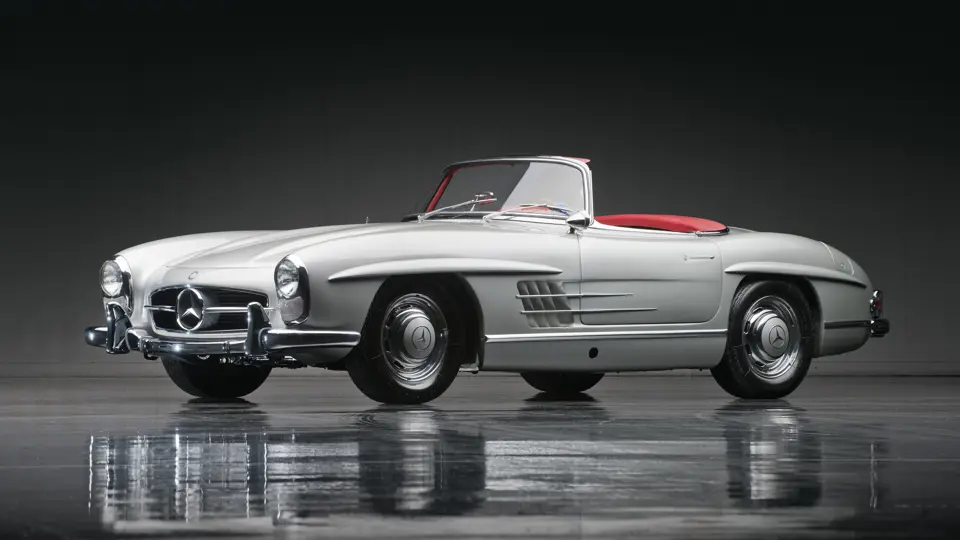
 | Fort Worth, Texas
| Fort Worth, Texas
